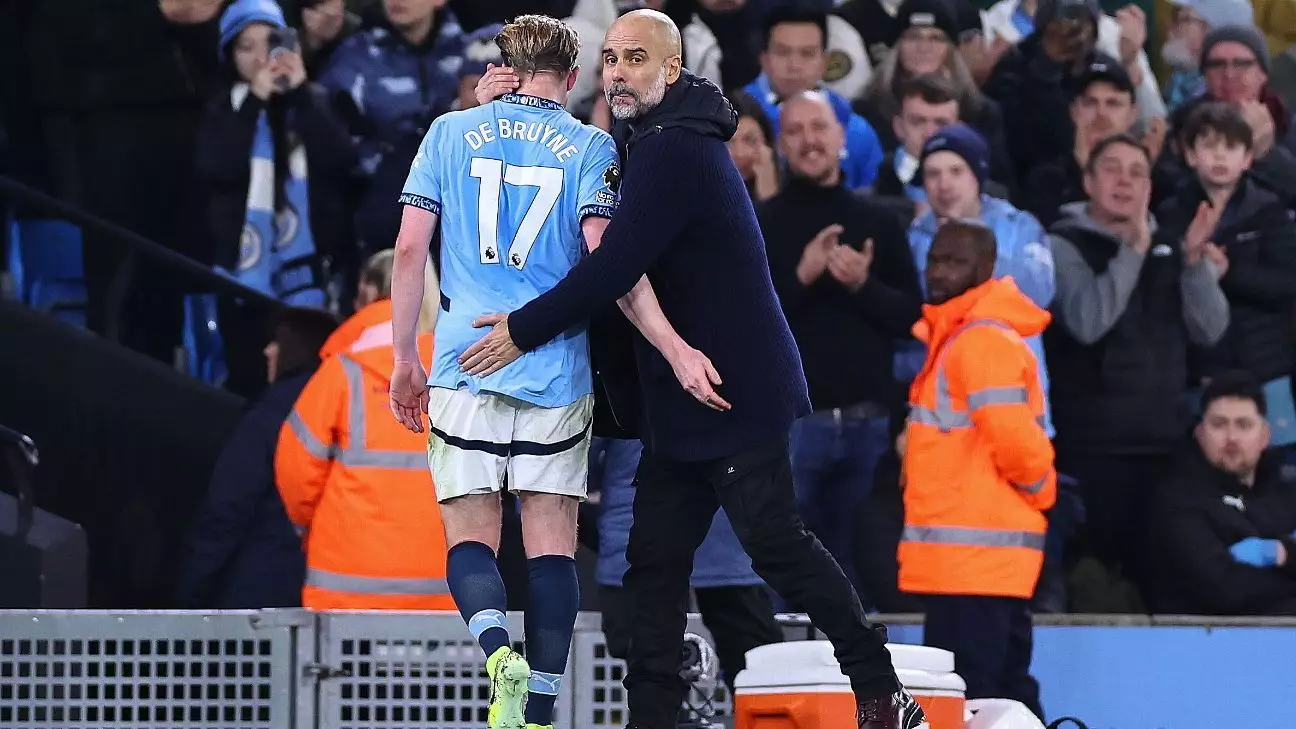Kevin De Bruyne has been a linchpin for Manchester City since his arrival in 2015, showcasing exceptional talent and influence on the pitch. However, as he approaches the age of 34 in June—shortly before his current contract with the Premier League champions expires—the situation has become more complex. Pep Guardiola has openly acknowledged that De Bruyne’s age will significantly influence discussions surrounding a potential contract extension. This acknowledgment indicates that the club’s management understands the blend of performance and longevity that elite athletes must navigate, especially in a demanding league like the Premier League.
De Bruyne’s recent performance has raised eyebrows, particularly given his struggles with injuries over the past two seasons. Having only started eight matches in the current season, it’s clear that both the player and the club are grappling with subpar performances at a critical time. Guardiola expressed concern over De Bruyne’s fitness and consistency, a sentiment that resonates not just with the Belgian but with many players in the squad. The lingering question is whether the club should invest in a player whose physical condition may not be reliable moving forward. This dilemma goes beyond just statistics; it involves a deeper analysis of what the club’s future holds given the changing dynamics of the squad.
Rumors have begun circulating about De Bruyne exploring opportunities in alternative leagues, such as the Saudi Pro League or even Major League Soccer (MLS) with clubs like San Diego FC. The prospect of him negotiating a free transfer with non-English teams adds another layer of intrigue to the situation. If City were to allow De Bruyne to leave, it would mark a significant moment in the club’s history. Transitioning away from a player of his caliber is a delicate decision, requiring the club to weigh his contributions against the potential for future injuries and role within an evolving squad.
Fortunately, in an optimistic twist, Guardiola has shared hopes that other squad members like Rodri—who recently garnered Ballon d’Or fame—might return in time for critical matches this season. However, Guardiola’s stance on bolstering the squad during the January transfer window is far less optimistic. His hesitation to commit suggests that the club is being prudent in its approach, avoiding impulsive acquisitions that do not align with the long-term strategy. This aligns with the broader philosophy often espoused by successful clubs: sign intelligently, not just frequently.
As Manchester City positions itself within the competitive landscape of English football, the situation surrounding Kevin De Bruyne serves as a microcosm of broader themes about age, performance, and strategic planning in a football club. The decisions made in the coming months will not only shape De Bruyne’s future but also determine Manchester City’s trajectory moving forward. Balancing the legends of the past with the promises of youth will be paramount as Guardiola and his team consider all aspects before finalizing decisions that could define a new era for the club.

